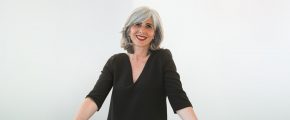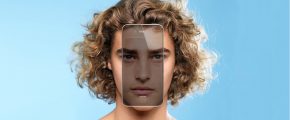Hairdressing: the dawn of a new era
To meet customers’ new expectations, hairdressers are reinventing their profession. Read on for a closer look at the innovative initiatives L’Oréal has rolled out to support these increasingly connected entrepreneur-artists through the transformation.
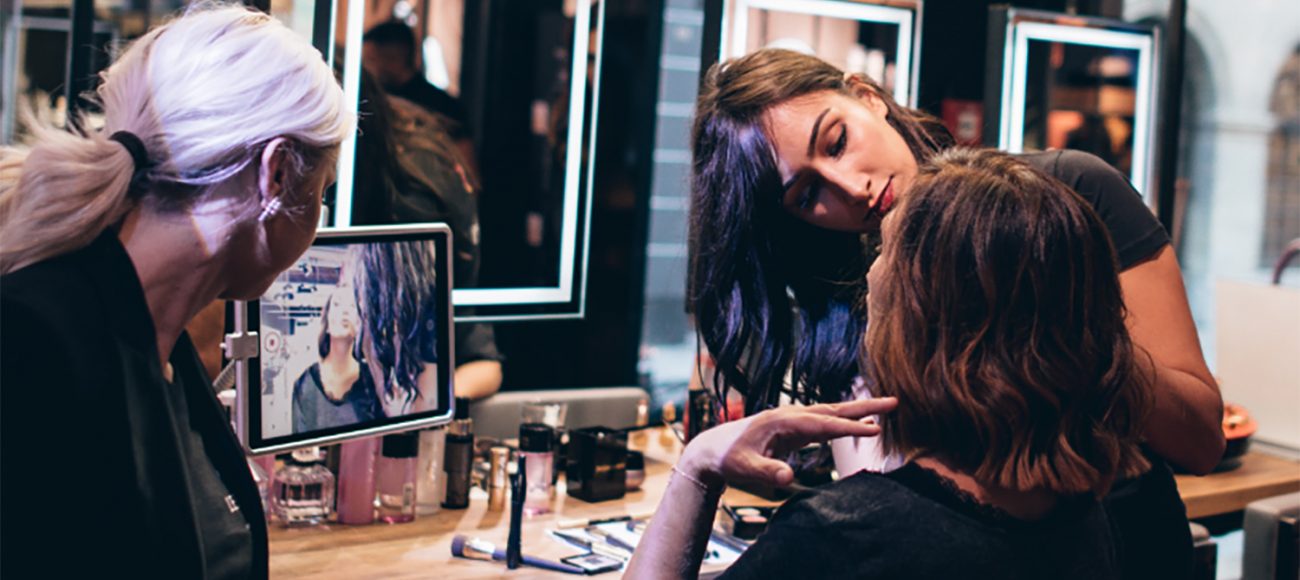
Hairdressing 3.0
Digital technologies have heavily impacted consumers’ relationship with hairdressers. They now expect extremely high levels of personalisation and increased ease of access to services in salons and at home. While professional expertise remains the foundation of a customised hairdo, growing numbers of consumers are buying L’Oréal brands – recommended by their hairdresser or suggested by influencers on social networks – online.
The reach of digitalisation also extends to services. Better informed, increasingly demanding customers now make salon appointments online – particularly in the United States, Japan and Russia. At-home, beauty apps have also met with growing success in the United States, the United Kingdom and Dubai. Thanks to digital connections with their customers, professionals can remotely provide personalised assessments and recommend suitable haircare rituals.
This new generation of hairdressers is also reinventing the salon concept itself. As the number of independent hairdressers grows, they have begun to explore different workspace solutions. In the United States and Canada, they often rent chairs in salons or use hotel suites, while in Japan they have adopted coworking spaces.
Supporting professionals through training
The Professional Products Division sees education as an integral part of its DNA. It is fully committed to supporting hairdressers through the transformation of their profession.
For all brands together, the Division boasts 3,800 trainers, 90 academies and 250 training studios worldwide. About 30% of partner hairdressers participate in trainings offered in salons, via short courses or at seminars, on subjects as diverse as management, digital technologies, running a business and technical skills.
The Division’s brands also galvanise professionals at major events. Two thousand hairdressers from 66 countries gathered for a three-day training celebrating L’Oréal Professionnel’s 110th anniversary. Redken invited over 8,000 managing hairdressers with 25 different nationalities for its Symposium in Las Vegas, which focused on inspiration and learning methods. And Kérastase gathered 46 education managers from all over the globe for a seminar that lasted several days. The long-term goal is to reach 100% of the Division’s partners, including mobile hairdressers, to ensure they have access to all the services and information they need to grow their businesses.
This goal can only be reached by creating digital tools like the Access platform, which offers trainings on a wide variety of topics: digital technologies, management, Salon E-motionTM, etc. Access is already available in approximately 20 countries and is expanding, with the aim of doubling that figure.

L’oréal has founded its own hairdressing school
The hairdressing industry currently lacks qualified and motivated candidates, with over 10,000 empty positions in the field in France. To boost the sector’s appeal among young people and improve employability, L’Oréal has opened its own hairdressing school in Paris and created the first ever bachelor’s degree in Hairdressing and Entrepreneurship. This programme provides a comprehensive training of excellence, combining technical courses with essential complementary skills in entrepreneurship and digital technologies. Aiming to reach as many people as possible, the training will welcome students from other hairdressing courses as well as those with more generalist backgrounds, professional hairdressers and people seeking to change professions. Those who need it will be invited to attend a month-long accelerated technique training to prepare for admission to the bachelor’s degree programme.
The aim is to train 10,000 hairdressers in 10 years. This new initiative is proof of L’Oréal’s commitment to helping to transform the hairdressing profession.
Top stylist: supporting the best hairdressering startups!

How do you select the most promising new hairdressers and help them open their own salons? L’Oréal developed a solution by creating Top Stylist. This innovative competition offers professionals eager to become entrepreneurs a chance to be a part of the first hairdressing business incubator at Station F, with the ultimate goal of opening their own salons. The first step in the Top Stylist adventure is selecting 10 winners during a technical and artistic challenge, followed by an assessment of their salon concept by a jury of business owners, entrepreneurs and experts. Next, the 10 winners receive a six-month training at the Top Stylist incubator at Station F, the largest startup campus in the world. During their time there, the winners learn from experts in diverse fields. They have the opportunity to think about hiring staff, growing their business and the customer experience as well the legal, marketing and digital aspects of owning a business. The programme goes all out to support the hairdressing talents of tomorrow.
Transparent sustainable innovation
As consumer choices become increasingly influenced by products’ environmental and health impacts, L’Oréal Research & Innovation has a clear mission: to deliver the best possible cosmetics in terms of innovation, effectiveness, quality and safety.
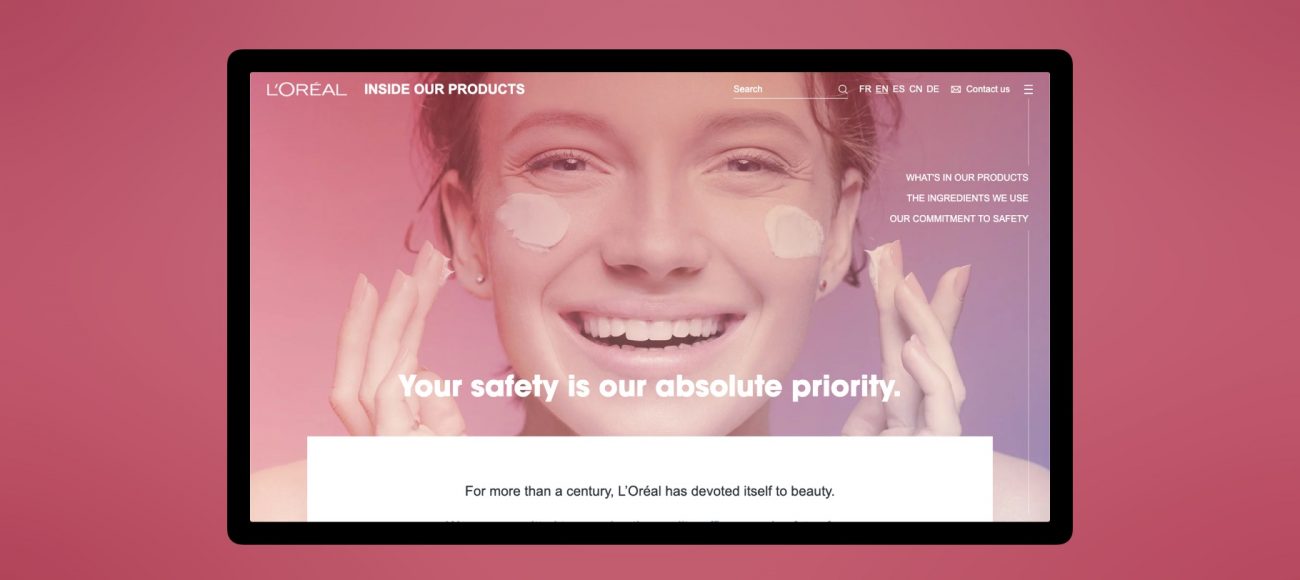
Naturel and effective
Developing products consumers see as safe and innocuous is a major challenge for L’Oréal – one in which Research & Innovation plays a crucial role. Via a dedicated programme, R&I has compiled a portfolio of innocuous ingredients and formulas, including a growing number of natural ingredients, to improve products’ social and environmental profile, in line with the “Sharing Beauty With All” programme . All of the Group’s brands build upon the work of Research & Innovation to develop increasingly environmentally friendly products, without compromising on performance.
Products that are environmentally friendly, made from natural ingredients, or labelled organic are at the heart of Research at L’Oréal. The vegan Nature + Science range by Redken, made from highly effective naturally derived ingredients, including a 100% natural origin fragrance, is just one example. Another is the Garnier Organic range, whose products are based on a rigorous selection of certified organic essential oils and floral waters, to ensure optimal results for each skin type.

Measuring products’ social and environmental impact
In addition to formulas, Research & Innovation strives to minimise products’ impacts thanks to SPOT , an all-new evaluation tool in consumer products, which is available to all Group teams. Analysing a cosmetic product’s lifecycle and its social and environmental impacts is a complex process, which must take many factors into consideration. The tool assesses 14 sustainability criteria throughout the product’s lifecycle, from use by consumers to packaging production and recycling. This process exceeds the recommendations of the European Commission in terms of the number of criteria examined.
Supporting sustainable innovation
L’Oréal also makes the most of sustainable innovation. Via its BOLD investment fund, the Group supports several startups, including Global Bioenergies, a green chemistry company that is pioneering the development of a process for converting renewable resources, such as sugar beet waste, into isododecane. This ingredient, which has previously only been produced from fossil fuels, is used in some cosmetics formulas.
Transparency: “Inside our products”
To ensure the Group’s processes and choices are transparent for consumers, L’Oréal created the “Inside Our Products” website, which answers their questions about Group products and their ingredients. The site is always evolving to include new content, to keep consumers informed and provide proof of the safety, quality and efficacy of L’Oréal cosmetics products.

Using tech to accelerate performance
By selecting the most innovative suppliers, the Operations teams have developed global communities focusing on each of the major challenges presented by acceleration and new consumer expectations.
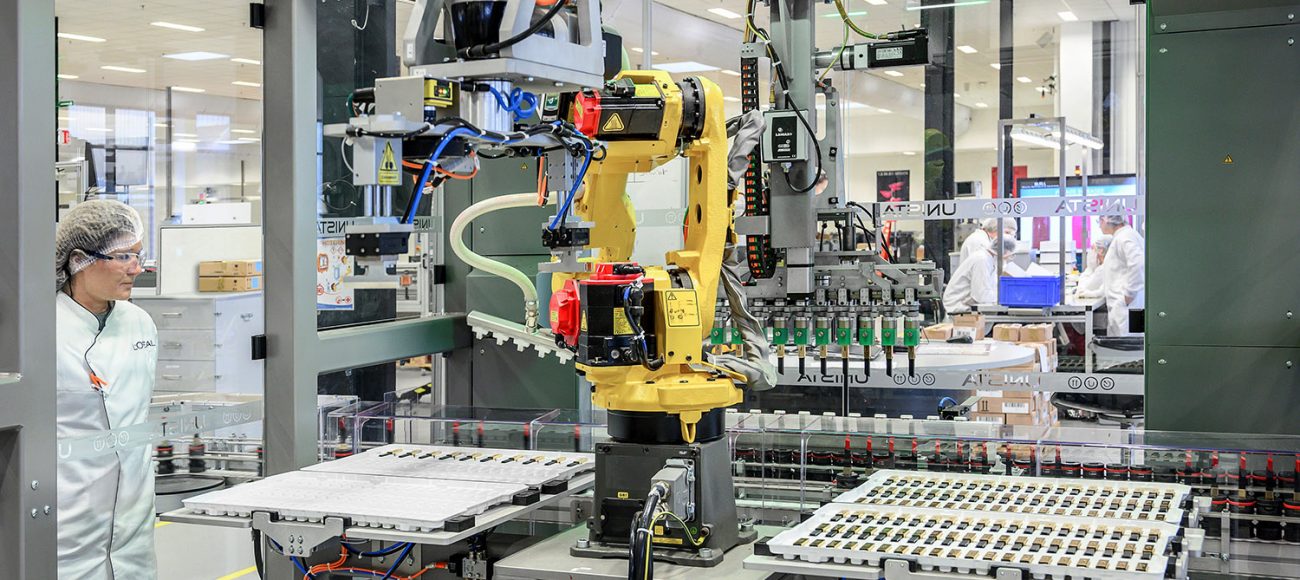
Working in partnership with suppliers, L’Oréal Operations develop prototypes and new technological solutions to reduce delays throughout the value chain, decrease costs while splitting orders into smaller batches, and meet rising demand for limited-edition and personalised products.
Our goal: to be the champion of Beauty Tech
In a rapidly accelerating world, where “what I want, when I want, where I want” has become the consumer mantra, new technologies are more crucial to performance than ever before.
L’Oréal Operations began their digital and technological transformation several years ago, to identify the relevance of new solutions (3D printing, artificial intelligence, cobots , virtual reality, connected objects, IoT , etc.) for each of its professions. They have also trained all teams worldwide in the use of these new technologies. For example, connected and agile new production lines have been developed by a global community of Operations employees and suppliers. Together, they have rolled out new solutions paired with IoT digital platforms to produce different products on the same line with just minutes of downtime between them. This agility means we can respond immediately to order increases and to demand for a wide range of makeup shades, all while enhancing performance. Five plants are already using this connected production line technology, and 20 additional lines are set to be rolled out worldwide.

Collaborative innovation
To encourage more Operations employees to play an active role in innovation, L’Oréal also launched Make Your Technology (MYT) in 2019. It is the first-ever in-house technology 4.0 incubator devoted to industrial challenges and logistics. Following the selection by a jury of experts, the aim is to incubate the most innovative solutions employees have developed to optimise their work. With training in “agility methods”, they have all the necessary means to design and create prototypes and quickly turn their projects into reality. They are also supported by startups, universities and qualified experts as they create these new solutions, which will eventually be deployed internationally. The incubator, located in Aulnay-sous-Bois (France), where it has 800 square metres of space, has been rolled out for industry and logistics chain employees in the EMEA (Europe, Middle East, Africa) region.
Learn more about MYT, L’Oréal’s first-ever in-house technology 4.0 incubator.

Supporting disruptive and sustainable technologies
L’Oréal supports partners who are developing disruptive technologies via its BOLD capital investment fund. For example, the Group participated in the capital increase launched by Carbios, a pioneer in the development of enzyme-based biodegradation processes and plastic biorecycling. This innovative process produces recycled PET that performs as well as traditional PET, opening the door to the possible replacement of a material made from fossil fuels. This initiative is part of the Group’s commitments for 2025: 100% of L’Oréal packaging will be refillable, reusable, recyclable or compostable, and 50% of the plastic used in packaging will come from non-fossil fuel sources.
Science and technology: the allies of dermocosmetics
Thanks to cutting-edge digital technologies, L’Oréal’s Active Cosmetics Division gives consumers access to responsible innovations that promote well-being.
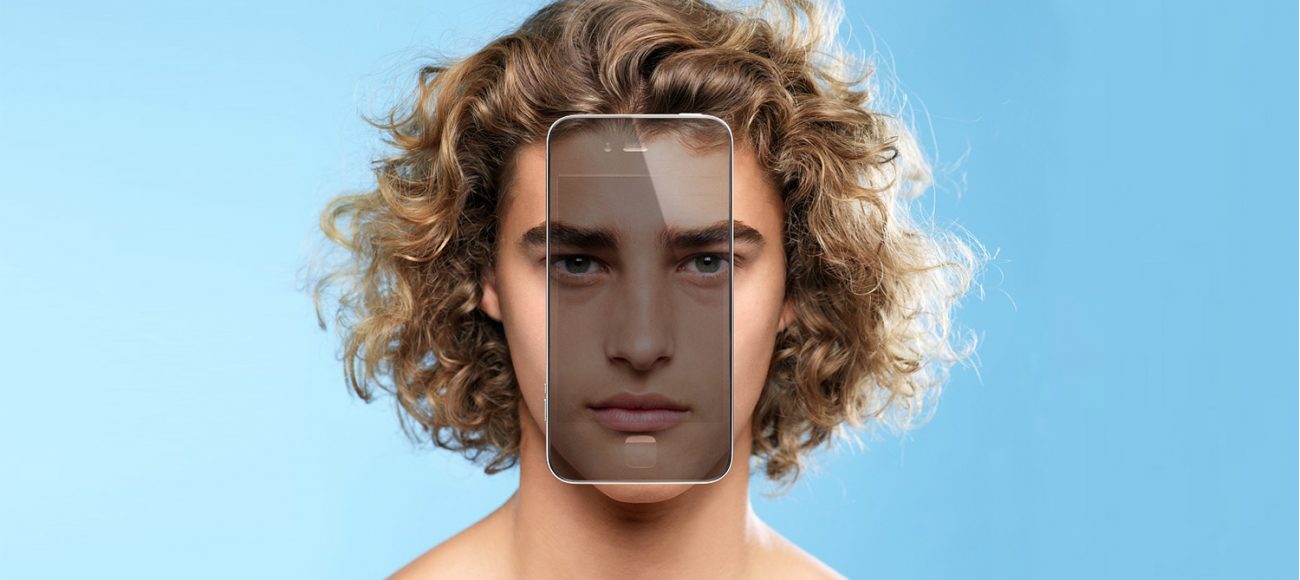
L’Oréal’s Active Cosmetics brands have chosen to be scientific pioneers in order to provide consumers with the best possible dermocosmetics solutions. Today, new technologies and innovations are an opportunity to offer more personalised products and advice, and to teach consumers to take better care of their skin.
Better skin thanks to artificial intelligence
Sensitive skincare expert La Roche-Posay has taken customer service to a new level by making the most of the latest Beauty Tech innovations to provide consumers with augmented services. With Effaclar Spotscan, the brand uses artificial intelligence to create an instant assessment of the severity of the user’s skin imperfections (spots, black heads, etc.). Effaclar Spotscan is based on an algorithm developed over the course of two years of research using 6,000 photos obtained with help from dermatologists and clinical research institutions. The precise and reliable application helps users correctly evaluate their imperfections using a severity rating that goes from 0 to 4+. Users who receive a rating of 2 or higher are advised to consult a dermatologist. The algorithm recommends an Effaclar routine that suits the user’s profile along with customised skincare advice. It also includes a simulator based on clinical results, to give users a glimpse of what their skin could look like after using the product. It then enables them to visualise their own progress day by day.
An application to measure the seven signs of ageing
Thanks to the combination of augmented reality technology and dermatological expertise, the SkinConsultAI application by Vichy detects and evaluates seven ageing signs from one selfie, comparing them to a database of 10,000 graded images. This second example of using artificial intelligence to benefit consumers is the fruit of over 15 years of research. The Atlas of Skin Ageing is the largest collection of data on skin ageing and is considered to be the global reference for evaluating the extent of skin ageing and predicting its course. SkinConsultAI provides users with an analysis of their skin’s strengths and its signs of ageing, so they can adopt a targeted approach to better counter the ageing process.

Making good choices to protect the skin
My Skin Track UV by La Roche-Posay is a portable battery-free sensor that works with a mobile application to measure exposure to UV rays, pollution, pollen and humidity. Co-developed with the L’Oréal technology incubator, My Skin Track UV is part of a decade-long commitment to research and innovation in the area of skin and sun safety. My Skin Track UV helps users better understand their environment so they can make better choices for their skin. The application provides personalised advice and preventive skincare recommendations.

New discoveries link microbiome to eczema
La Roche-Posay has been working with dermatologists to place microbiome investigations at the heart of its research for over 10 years. The balance of the invisible ecosystem of micro-organisms that live inside the human body and on the skin plays a crucial role in well-being. La Roche-Posay research has revealed that an imbalanced microbiome can cause cutaneous reactions such as itching or redness and contribute to acne, psoriasis and eczema. Recent discoveries have shown that eczema flares can be linked to a drastic drop in bacterial diversity, resulting in dry skin and itching. Given these results, La Roche-Posay developed a new generation of moisturisers – Lipikar Baume AP + M – to combat extreme dryness and atopic tendencies, and repair the skin by instantly soothing it, drastically reducing itching, and preventing recurrences.
When artificial intelligence teams up with e-commerce
E-commerce continues to assert itself as a powerful growth driver. It owes its success to two factors: the accessibility of products even in remote areas and a range of services based on augmented reality and artificial intelligence.
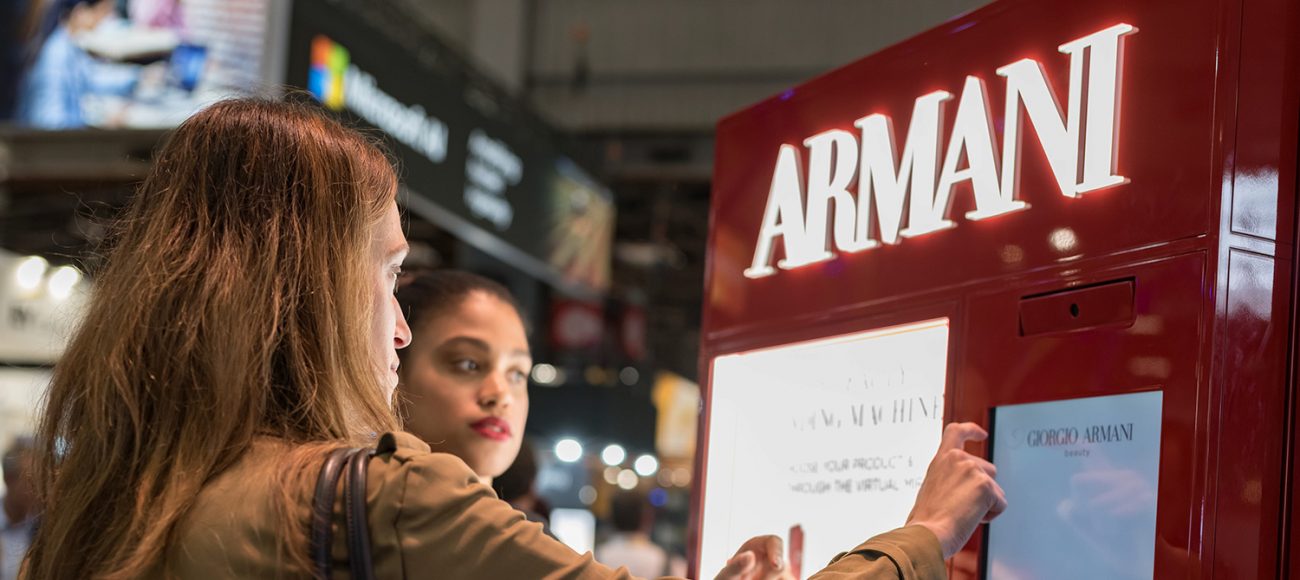
Making beauty even more personalised and accessible
As e-commerce platforms grow in number and diversity, L’Oréal’s offer is tailored ever more precisely to the user’s profile and country, winning over more and more consumers. As the first beauty Group to sell on Tmall in China in 2010, L’Oréal achieves record online sales every year on 11/11, or Singles’ Day, a day of celebration when brands and e-commerce sites offer exceptional experiences.
E-commerce makes L’Oréal brands accessible to the widest possible audience, particularly in emerging markets like India and Indonesia, as well as in remote and undeveloped areas where there are few sales outlets. Apart from China, emerging countries such as India and Indonesia are seeing the highest growth rates in the Group.

Services augmented by new technologies
What sets L’Oréal’s e-commerce platforms apart is undeniably the services provided. Take for example ModiFace, a leading augmented reality and artificial intelligence company that L’Oréal acquired in 2018. Thanks to ModiFace technology, users can try on makeup, hair colour products and have beauty consultations and skin diagnoses online. In 2019, Vichy carried out more than 650,000 skin “diagnoses”, enabling the brand to build up a detailed picture of its consumers worldwide, their skin issues and their favourite products, which are now a precious source of marketing and research intelligence. L’Oréal has linked up with Facebook, Instagram, YouTube, Snapchat, WeChat and Tmall, the world’s most popular digital platforms, enabling users to virtually try on makeup and hair colours using ModiFace.
Digital services offer huge potential and have a major impact in consumer retail because they allow consumers to try on products and obtain personalised advice before buying. For example, Garnier teamed up with Google Lens and ModiFace to enable customers visiting 500 Walmart stores in the United States to scan hair colour packaging with their phones and try on the colour directly in augmented reality. The Group’s brands offer more than 20 digital services via mobile apps, websites, social media and tablets in-store.
Agile transformation management
To meet the challenges of the tech revolution, which affects both consumer habits and working methods, L’Oréal is constantly adapting and transforming itself. The IT teams closely support L’Oréal personnel through the transformation process by developing new solutions in Agile mode.
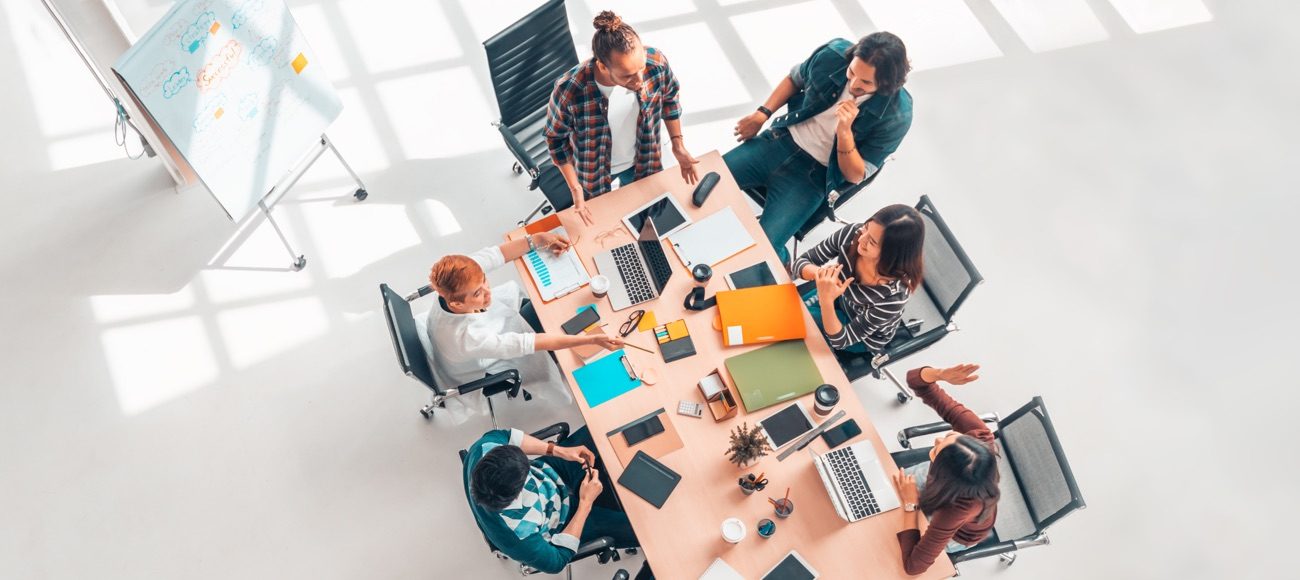
Offering added value for the end user
L’Oréal applies the principles of the Agile methodology for its major tech projects. These include: defining short cycles to speed up implementation; making solutions user-centric so that they can constantly be improved; measuring user experience and seeking their approval at every stage; fostering collaboration by giving each member of the project team a sense of responsibility (users, architects, developers, etc.). All these elements make a difference, cutting production time and ensuring that solutions precisely meets users’ needs.
To support L’Oréal’s agile IT transformation, the IT project teams were trained in the Agile methodology and new multidisciplinary project platform concepts were implemented.

An innovative and disruptive methodology
The aim of the COSMO project was to rethink, simplify and update the existing process for creating product codes (unique identifiers for L’Oréal products) to make life easier for some 10,000 employee users working in marketing, the supply chain and packaging in 50 countries. Together, they create approximately 400,000 product codes every year.
Working in Agile mode for greater speed, the project used new competencies and solutions: Design Sprint enabled problems reported by users worldwide to be resolved quickly and stimulated the project team’s creativity enabling them to come up with innovative new functionalities. As a result, in five days, the team was able to progress from solution design in co-creation mode to initial prototype testing by key users. New techniques were used to optimise the user experience, including think-aloud to record verbal feedback from users, and System Usability Scale, a questionnaire to measure user perceptions.
COSMO, the solution that resulted from this process, has multiple advantages: a single, reliable data source, time saving and a new ergonomic design.
Tech transforms the beauty market
With new technologies, the beauty market is witnessing a true revolution, especially in services. Progress in this area is making a real difference to consumers.

Reinventing the beauty experience
How can you be sure of choosing the right shade of lipstick when buying online? This is a question that makeup consumers no longer have to ask themselves thanks to ModiFace, a startup acquired by L’Oréal in 2018 that uses augmented reality for consumers to try on beauty products and simulate hair colour. The collaboration with Facebook enables users, on this social media platform all over the world, to virtually try out the Group’s main beauty brands. Amazon users have also recently been able to virtually try on makeup products by taking a video or a selfie on their phones.
Technological advances have also made their mark in the area of personalised skin “diagnosis”. An artificial intelligence algorithm developed by ModiFace, combined with deep learning and the expertise of L’Oréal’s skincare laboratories, enables a precise assessment of the signs of skin ageing based on a selfie as well as recommendations for beauty routines and tailor-made products.

Open innovation and partnerships
L’Oréal is convinced that a dynamic mix of ideas from within and outside its organisation can transform the way consumers interact with beauty. It is therefore pursuing initiatives to strengthen its open innovation strategy – a means of identifying new startups to partner with and complement our existing collaborations with Founders Factory, Partech International Ventures and Station F. We aim to continue pooling expertise to create the next generation of innovative beauty products, applications and digital services.
The partnerships that L’Oréal forms with its distributors also play a significant role in transforming the customer experience. The Group makes its technologies available to distributors in open source , so as to remain the “category captain” for beauty and a partner of choice. In 2019, the Group joined forces with A.S. Watson in China for the virtual makeup try-on app #ColourMe, with Google Lens in the United States for virtual hair colour try-on, and with Boots in the UK for a skin “diagnostic” app giving free online dermatological advice.
All these partnerships enable us to offer consumers a unique way of discovering and evaluating cosmetics and to put the magic back into the beauty experience.
The direct-to-consumer channel: enhancing the luxury experience
In today’s world, luxury brands must build privileged relationships with consumers, who want more personalised services and exclusive products. The direct-to-consumer channel, which provides a unique experience online and in stores, plays a crucial role.

E-commerce: personalisation and exceptional service
L’Oréal Luxe stands out thanks to the consistently high-quality, consumer-centric services it provides via e-commerce. Demand for the Division’s products continues to grow in this channel, which offers a wide range of benefits such as online skin “diagnoses”, videos and tutorials to make the most of purchased beauty products. The expert advice available is also becoming increasingly personalised, allowing consumers to choose products that truly suit their needs. L’Oréal brands’ own websites, which attract hundreds of millions of visitors each year, are their primary showcase. They have become indispensable for consumers, who benefit from the wealth of information they provide. E-commerce websites help the brands reach consumers in areas of the world where physical points of sale are few and far between.

Beauty Tech creates new in-store experiences
The retail experience is also changing rapidly to become more exceptional and experience-based with the opening of the first Lancôme flagship store – 300 immersive square metres on the Champs-Elysées. Inside, Lancôme offers consumers a host of bespoke services and tailor-made consultations. Shade Finder combines mobile device technology, algorithms and data with advice from a beauty advisor to recommend a foundation shade that is a perfect match for the consumer’s complexion. Le Teint Particulier instantly produces custom foundation in stores, as customers watch, thanks to high-speed machine.

The makeup area features virtual mirrors equipped with ModiFace technology and offers makeup master classes. In the skincare area, the digital tools Youth Finder and Génifique Probes help beauty advisors develop a routine suited to each consumer. Last but not least, the second-floor spa invites visitors to enjoy exceptional treatments.
Learn more about the Lancôme experience as described by Global President Lancôme Françoise Lehmann and the brand’s Global Deputy General Manager James Rickards.
New information technologies to support researchers
How can technology help employees increase their work abilities and the software solutions they rely on?
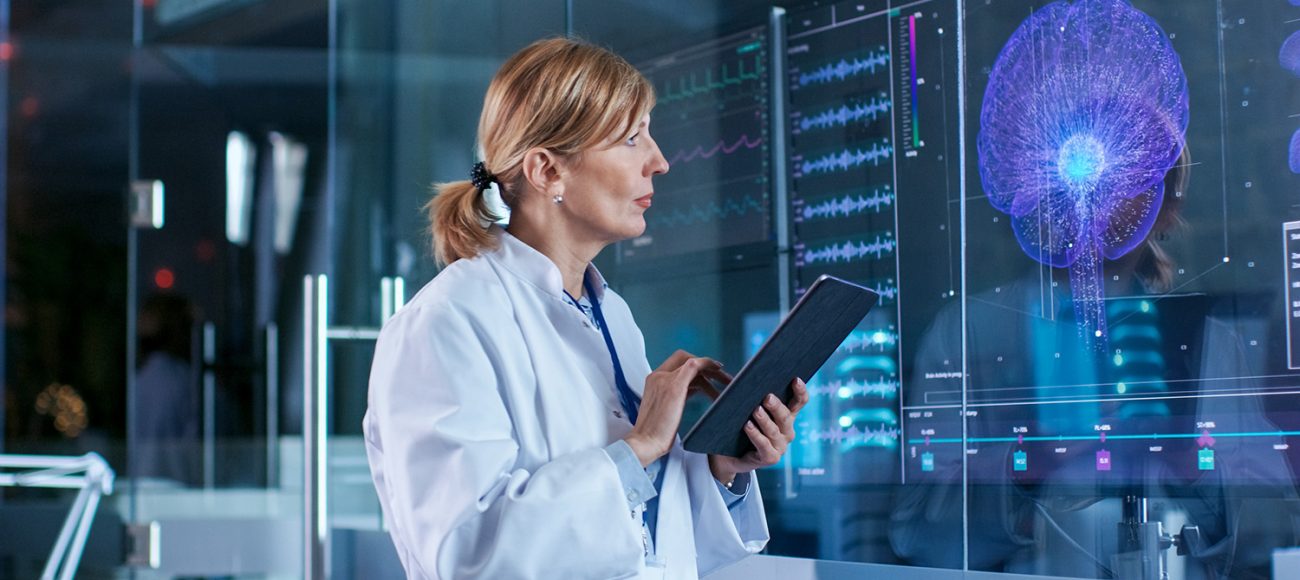
The augmented researcher
For several months, hundreds of L’Oréal Research & Innovation employees have had daily access to the Formulation Center, a unique new integrated platform bringing together comprehensive information that was previously distributed across multiple platforms and repositories. Employees have an “augmented researcher” dashboard giving them access to groundbreaking molecules, ingredients, raw materials and formulas. Combined with the power of algorithms, this information speeds up the formulation process, simplifies compliance and makes for enlightened decision-making based on data science. This important transformation, which is shaking up working practices, aligns perfectly with the Group’s Research & Innovation transformation programme, and marks a further step towards L’Oréal’s goal of becoming a smart company.

Smart data convergence
L’Oréal’s IT teams were fully committed to achieving this result, with one priority – the user experience – and one ambition – to augment the researcher’s task. The success of the Formulation Center is down to its design: a fully integrated, agile platform co-built with the different business areas, making the most of new technologies. Algorithms to boost the effectiveness of data accumulated over 35 years, data science, APIs� and artificial intelligence, with 11 digital assistants dedicated to predictive evaluation.
As a result of the collaboration between multiple entities, the Formulation Center also acts as an accelerator for the Group’s flagship programmes that share the same application, benefiting more than 5,000 employees working in Research & Innovation, as well as in Operations and in the Divisions. It also serves various business areas and functions across the organisation, including formulators, chemists, scientific directors, purchasing and operational development.
Enhanced agility in logistics
Our fully connected world has led to increasingly demanding expectations in terms of response times and agility. L’Oréal Operations are transforming their logistics and distribution network to meet those expectations.
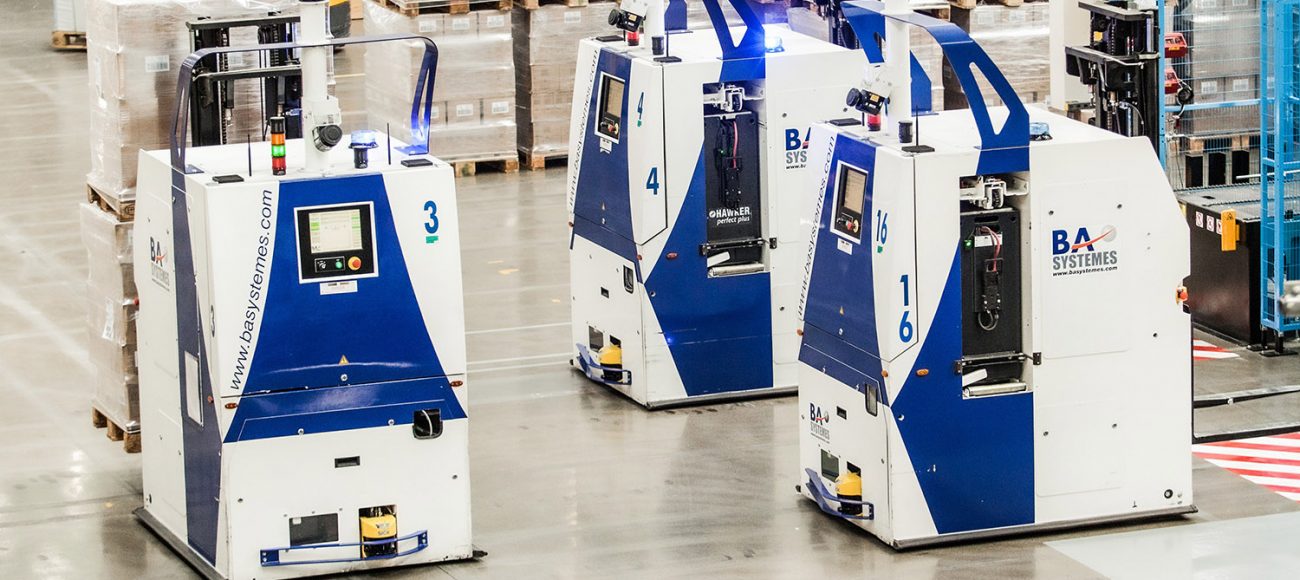
An optimised physical network
Motivated by its goal to reduce delivery times in both the B2C and B2B channels, L’Oréal has stepped up its investment in the automation of its logistics centres and the optimisation of product distribution. The Group is constantly working to ensure employees benefit from a safe, sustainable and modern workplace. These transformations are a major source of agility, enabling us to react more quickly when faced with the Group’s rising volumes and to ensure the success of increasingly popular events such as
Black Friday or Singles’ Day (11/11) in China. To rise to the challenge, we mount temporary logistics centres during very high-demand periods alongside other solutions.

In the United States, the equipment installed at distribution centres has significantly reduced the distances employees must cover. It has also enabled us to implement mobile shelves and automate cardboard collection.
In Singapore, new infrastructures – a high-density stocking configuration that maximises manoeuvres and optimises space, and a fully centralised automatic shuttle system, for example – are proof of L’Oréal’s commitment to excellence in logistics.
In Muggensturm, Germany, L’Oréal opened its largest logistics centre in the world, with a surface area of 100,000 square metres. This new centre boasts a remarkable stock capacity, which means it can supply products for three Group Divisions to three countries (Germany, Austria and Switzerland) more flexibly and with greater quality of service.

E-commerce in the era of personalisation
In just a short time, e-commerce has come to account for a large share of cosmetics purchasing behaviours – it now represents 15.6% of L’Oréal sales . Consumer expectations are also evolving rapidly in this distribution channel, becoming increasingly demanding.
To meet the growing demand for personalisation, L’Oréal takes a differentiated approach in line with the expectations of consumers in each country and also offers customised services. The Group accepts a wide variety of payment methods and offers a range of delivery options with optimised wait times. These optimisations enable us to meet consumer expectations in a world where next-day delivery, seven days a week, has become the norm. Another form of customisation is increasingly popular with consumers as well: personalised and bespoke products including engraved bottles, personalised samples based on purchasing habits, and gift packaging for special occasions (birthdays, Christmas, etc.).

